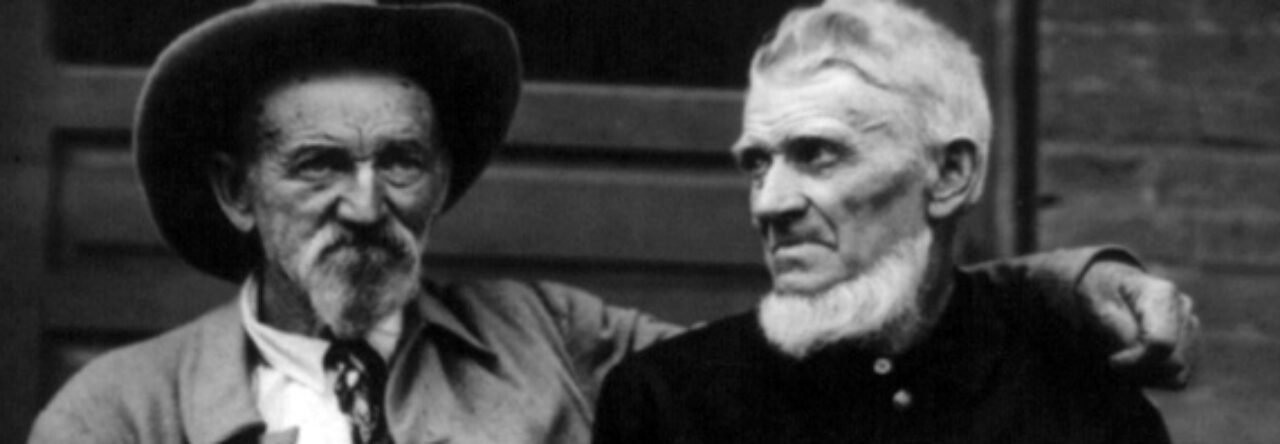 As the bloodshed in Kansas and during John Brown’s Raid on Harpers Ferry in Virginia set an awful precedent on the road to civil war, the nation grew at a remarkable rate. By the end of the decade there had been a 34% increase in population to more than 31 million, of which almost four million were slaves. Minnesota, California, and Oregon had become states, while Kansas, Nebraska, Utah, and Washington were organized as territories. By 1860, many more Americans were living in cities. In the twenty years since 1840 the number of towns with more than 8000 people had more than tripled, to 141.
As the bloodshed in Kansas and during John Brown’s Raid on Harpers Ferry in Virginia set an awful precedent on the road to civil war, the nation grew at a remarkable rate. By the end of the decade there had been a 34% increase in population to more than 31 million, of which almost four million were slaves. Minnesota, California, and Oregon had become states, while Kansas, Nebraska, Utah, and Washington were organized as territories. By 1860, many more Americans were living in cities. In the twenty years since 1840 the number of towns with more than 8000 people had more than tripled, to 141.
Bleeding Kansas
 Immigrants from the north-east, the north-west, and the neighboring slave state of Missouri competed with terror and violence to insure that the Territory of Kansas would enter the Union either as a free or a slave state. After four years of atrocity, Kansas entered the Union as a free state in 1861 with the nation on the verge of Civil War.
Immigrants from the north-east, the north-west, and the neighboring slave state of Missouri competed with terror and violence to insure that the Territory of Kansas would enter the Union either as a free or a slave state. After four years of atrocity, Kansas entered the Union as a free state in 1861 with the nation on the verge of Civil War.
Fugitive Slave Law
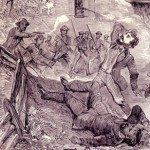 The Compromise of 1850 included a federal law to force the return of fugitive slaves from the North. This led to sometimes violent and litigious incidents, as at Christiana in Pennsylvania in September 1851, where a slaveholder was killed and several Pennsylvanians were tried for treason under the new law.
The Compromise of 1850 included a federal law to force the return of fugitive slaves from the North. This led to sometimes violent and litigious incidents, as at Christiana in Pennsylvania in September 1851, where a slaveholder was killed and several Pennsylvanians were tried for treason under the new law.
Lincoln-Douglas Debates
 Abraham Lincoln of Illinois sprang to prominence as a leader of the Republican Party with an unsuccessful contest against the sitting Democratic senator Stephen Douglas. A series of public debates between the two in late summer 1858 grasped the attention of the entire country. A major topic in the conversations was the future of slavery, especially in newly settled territories.
Abraham Lincoln of Illinois sprang to prominence as a leader of the Republican Party with an unsuccessful contest against the sitting Democratic senator Stephen Douglas. A series of public debates between the two in late summer 1858 grasped the attention of the entire country. A major topic in the conversations was the future of slavery, especially in newly settled territories.
John Brown’s Raid
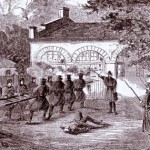 In mid-October 1859, veteran Kansas radical John Brown and a group of fighters attempted to occupy the Harpers Ferry Arsenal in western Virginia and thereby arm slaves for a massive slave insurrection. The raid failed, many of his men were killed, and John Brown was executed in December 1859.
In mid-October 1859, veteran Kansas radical John Brown and a group of fighters attempted to occupy the Harpers Ferry Arsenal in western Virginia and thereby arm slaves for a massive slave insurrection. The raid failed, many of his men were killed, and John Brown was executed in December 1859.
New Dome for the United States Capitol
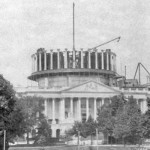 In September 1855 work began on dismantling the old wooden dome on the U.S. Capitol in Washington D.C. in preparation for the erection of a new structure that would tower 288 feet over Capitol Hill. The new stone dome, the design of Thomas Walter, would be largely in place in 1863 and was completed in 1866. In all, the new structure cost more than a million dollars.
In September 1855 work began on dismantling the old wooden dome on the U.S. Capitol in Washington D.C. in preparation for the erection of a new structure that would tower 288 feet over Capitol Hill. The new stone dome, the design of Thomas Walter, would be largely in place in 1863 and was completed in 1866. In all, the new structure cost more than a million dollars.
Isaac Singer and his practical home sewing machine
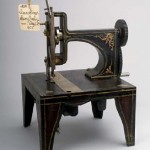 I.M. Singer, a forty year-old German immigrant living in Boston was granted Patent Number 8294 on August 12, 1851 for his new compact and practical sewing machine. Though designed at first for factory use, the Singer Sewing Machine would soon come into the home and change the sewing habits of millions of Americans.
I.M. Singer, a forty year-old German immigrant living in Boston was granted Patent Number 8294 on August 12, 1851 for his new compact and practical sewing machine. Though designed at first for factory use, the Singer Sewing Machine would soon come into the home and change the sewing habits of millions of Americans.
Half a million New Yorkers, and growing
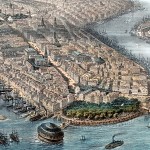 The U.S. Census counted 515,547 people in New York City in 1850. Far outstripping Baltimore in second place and Boston in third, New York’s numbers continued to grow with thousands of new immigrants, particularly poor Irish fleeing the lingering effects of the famines of recent years. By 1860, there would be 805,658 New Yorkers, 383,717 of them foreign-born.
The U.S. Census counted 515,547 people in New York City in 1850. Far outstripping Baltimore in second place and Boston in third, New York’s numbers continued to grow with thousands of new immigrants, particularly poor Irish fleeing the lingering effects of the famines of recent years. By 1860, there would be 805,658 New Yorkers, 383,717 of them foreign-born.
“Dixie”
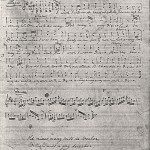 Daniel Emmett wrote “Dixie” in New York City where he was singing with Bryant’s Minstrels, white singers performing in blackface, a popular genre at the time. The group gave a debut to the song during the finale of their show at the Mechanics’ Hall in the city on April 4, 1859. It became an instant hit and Emmett sold the rights for $500.
Daniel Emmett wrote “Dixie” in New York City where he was singing with Bryant’s Minstrels, white singers performing in blackface, a popular genre at the time. The group gave a debut to the song during the finale of their show at the Mechanics’ Hall in the city on April 4, 1859. It became an instant hit and Emmett sold the rights for $500.
Stowe and Darwin
 Harriet Beecher Stowe’s novel Uncle Tom’s Cabin appeared in 1852 and Charles Darwin’s Origin of the Species By Means of Natural Selection in London in November 1859. Stowe’s novel became the best-selling fiction of the century in America and Darwin’s book sold out on the morning of its first day of publication in London.
Harriet Beecher Stowe’s novel Uncle Tom’s Cabin appeared in 1852 and Charles Darwin’s Origin of the Species By Means of Natural Selection in London in November 1859. Stowe’s novel became the best-selling fiction of the century in America and Darwin’s book sold out on the morning of its first day of publication in London.
